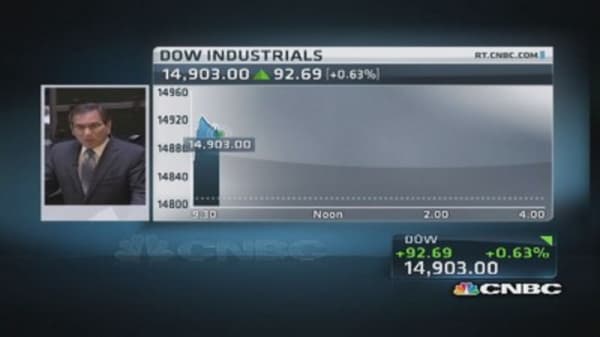A reading above 50 indicates expansion in the sector.
New orders also marked their best level in more than two years, with that sub-index jumping to 63.2 from 58.3. Employment, however, slipped to 53.3 from 54.4.
The government will release its August employment report on Friday. Economists forecast employers added 180,000 new jobs last month after hiring 162,000 workers in July.
Manufacturing has been hurt this year by cuts in government spending and weaker global demand, causing the sector to shrink in May. But sizable increases in activity in July and August are adding to economists' views that U.S. goods-producing companies are finding their footing as the year wears on.
Data last week showed the economy grew at a quicker-than-expected pace in the second quarter and should continue to gain momentum.
Construction spending rises
U.S. construction spending rose in July as more outlays to build homes and businesses countered a decline in the government sector.
Construction spending climbed 0.6 percent to an annual rate of $901 billion, the Commerce Department said on Tuesday. The growth rate was above the median forecast in a Reuters poll of analysts.
The biggest gain in spending came from the business sector as firms increased outlays on projects for offices, commercial buildings and factories.
Private spending on home construction projects also advanced, a sign builders were still betting on a housing market recovery despite a sharp increase in mortgage rates since May.
Borrowing costs have been on the rise due to expectations the U.S. Federal Reserve will reduce its bond-buying stimulus program.
Holding back the construction industry in July, however, was a drop in spending by state and local governments. Federal construction spending, a small fraction of total public sector construction outlays, increased during the month.
Overall, public sector spending fell 0.4 percent. State and local governments are feeling the pinch this year from federal budget cuts, which affect the level of transfers to local administrations.




